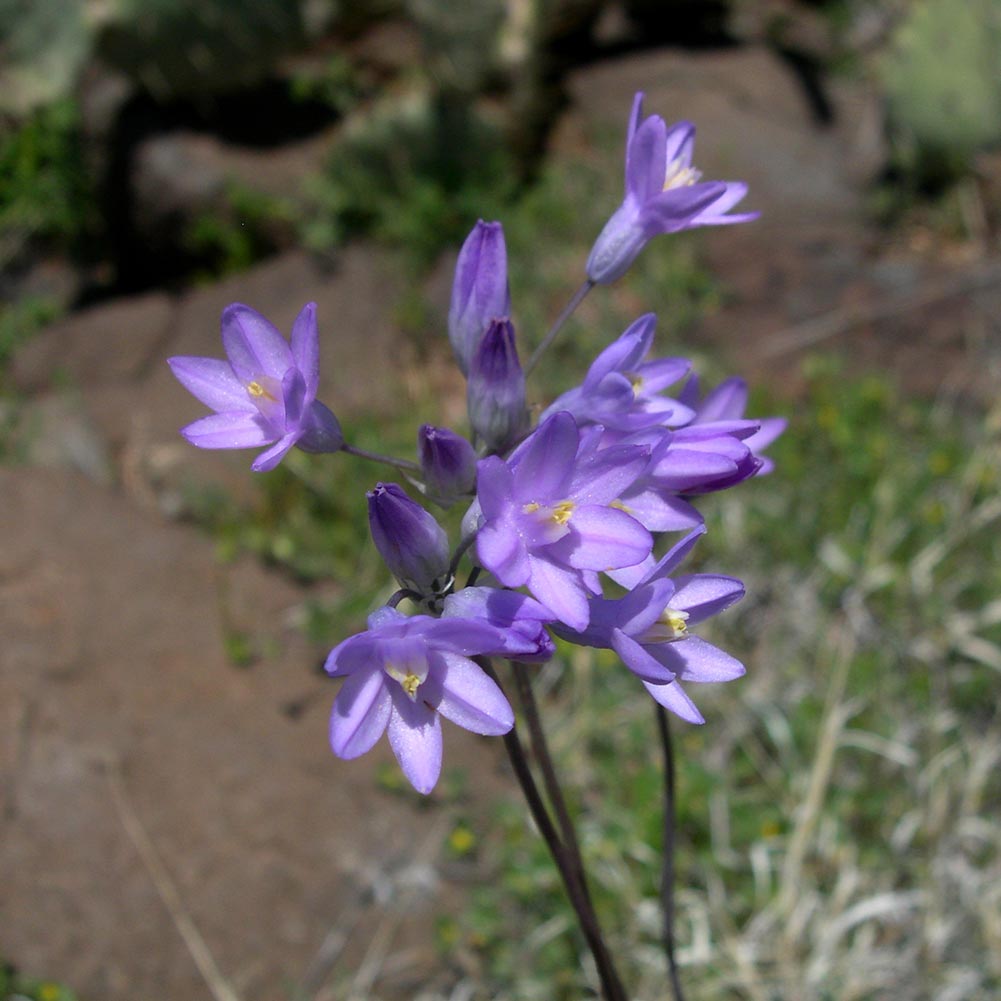
|
Family: Asparagaceae |
Herbs, perennial, scapose, from fibrous-coated corms. Leaves 1-5, basal; blade narrowly lanceolate, usually keeled and channeled, margins entire. Scape solitary, usually weak, curved to twining, cylindrical, smooth to scabrous. Inflorescences umbellate or racemose, usually dense, 2-20-flowered, bracteate; bracts 2-4, ± papery, not enclosing flower buds. Flowers: perianth 6-tepaled, distinctly connate proximally into tube, tube cylindrical, ovoid, or campanulate, occasionally globose or urceolate, soft, limb lobes similar; perianth appendages arising from intersection of perianth tube and limb lobes, leaning toward or away from anthers, forming corona; anthers basifixed, held close to style; stamens 3 (6 in Dichelostemma capitatum), epitepalous; filaments entirely adnate to perianth tube; staminodia absent (except in D. volubile); pistil 3-carpellate; ovary superior, sessile or stipitate, 3-locular, ovules several; style 1; stigma weakly 3-lobed; pedicel erect or flexuous, articulate beneath perianth, usually shorter than flowers. Fruits capsular, 3-angled, usually ovoid, firm, dehiscence loculicidal. Seeds black, sharply angled, coat with crust. x = 9 (8 in D. ida-maia). For discussion of relationships, see under Brodiaea. Although Hookera pulchella Salisbury was the first name published for an entity in the group of species here treated under Dichelostemma, its application, and therefore that of Brodiaea pulchella (Salisbury) Greene, D. pulchellum (Salisbury) A. Heller, and Dipterostemon pulchella (Salisbury) Rydberg, is uncertain (G. Keator 1967). Some authors have associated it with Dichelostemma congesta, others with D. capitatum or with a yet different species. The corms of some Dichelostemma species were eaten by native Americans.
|
This project was made possible in part by the Institute of Museum and Library Services [MG-70-19-0057-19].
Powered by Symbiota



